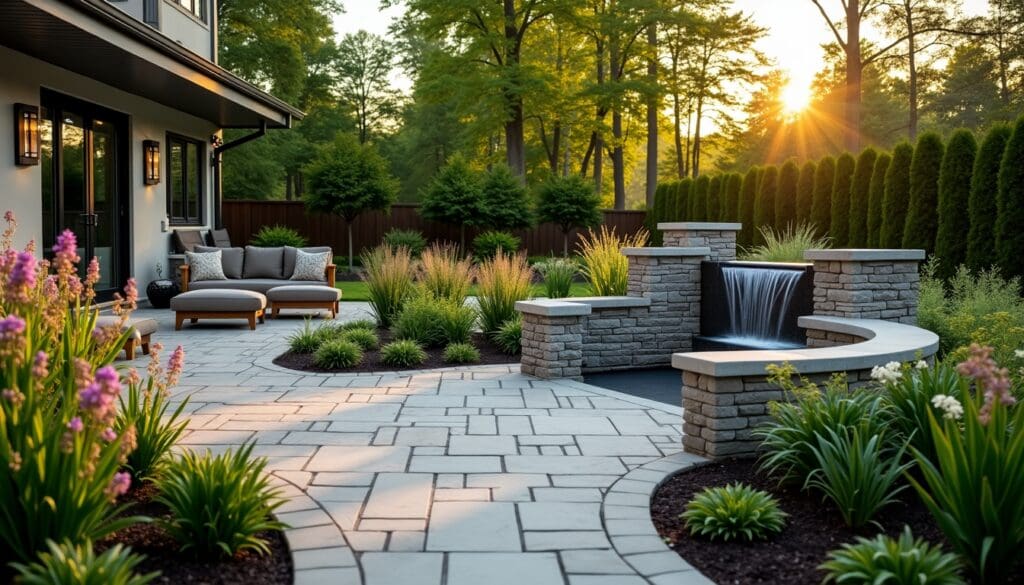Landscape Planning Made Easy: Select the Perfect Features for Your Home
Your dream landscape project doesn’t need complex planning. Most homeowners feel stuck and overwhelmed when designing their outdoor spaces. The right design can make your outdoors a stunning, useful part of your home, whether you start fresh or renovate your existing yard.
A perfect landscape starts with knowing which features meet your needs. Your yard’s enjoyment depends on every choice you make. Your outdoor experience depends on your plants, hardscapes, water features, and outdoor living spaces.
Do you want to build an outdoor space you’ll treasure? We should explore the fundamentals of landscape planning and design. These elements will guide you toward creating your perfect outdoor sanctuary.
Essential Landscape Features to Consider
A beautiful landscape comes from knowing the basics. They add beauty and function to your outdoor space. Your design should blend features that work together in harmony. These features follow the basic principles of line, form, texture, color, and scale.
Hardscape Elements (Patios, Walkways, Retaining Walls)
Your landscape’s foundation is its hardscape. It gives structure to your outdoor space. Here are key hardscape materials you should think about for your design:
- Natural stone and pavers for patios and walkways
- Concrete or brick for structural elements
- Wood or metal for decorative features
- Retaining walls for terrain management
A well-designed patio extends your home and creates a space to relax and entertain. Straight lines in walkways look formal, while curved paths feel more natural and relaxed.
Water Features and Focal Points
Water features catch the eye and reshape the scene into a peaceful retreat. A simple fountain or an elaborate pond adds beauty to your landscape and provides calming sounds. Place your water feature where people can easily see it, and you can manage to keep it clean. An open space away from trees works best to reduce maintenance needs.
Plant Selection and Garden Beds
Your landscape’s success depends on matching the right plants with the right spots. Think about your yard’s specific environmental conditions before selecting plants, including:
Plants establish roots quickly and thrive in ideal growing conditions. Your garden beds should vary in height, texture, and color, creating a strong visual impact. Natural materials usually have muted colors, so place plants to add bright color to your landscape.
Creating Functional Outdoor Spaces
To make your outdoor space more versatile, create functional zones for different activities. A good landscape design will combine entertainment, dining, and family areas into one outdoor space.
Entertainment Areas and Seating
Social spaces should invite people to gather and relax. Place your seating areas 10-15 feet from your home’s entrance to keep things convenient. Your entertainment zone needs these key elements:
- Built-in benches to save space
- Comfortable modular seating you can rearrange
- Fire pit or fireplace you can enjoy all year
- Shade solutions to stay comfortable
Outdoor Kitchens and Dining Spaces
Your outdoor kitchen needs both style and function. Place cooking areas where the wind blows smoke away from seated guests. A custom outdoor kitchen with high-quality features typically costs between $15,000 and $30,000, though simpler versions can be built for much less.
Set up separate zones for food prep, cooking, and cleanup to ensure smooth operation. Stainless steel appliances and granite or stone countertops, which are durable materials, will make your outdoor kitchen appealing in any weather.

Activity Zones for Family Use
Create dedicated spaces for family activities that look great with your overall landscape. Put activity zones outside lawn areas to make maintenance easier. Here’s what you might include:
Children’s Play Areas: You can watch the kids easily if you put these spaces within view of your kitchen windows. Use mulch or gravel instead of grass to cut down on maintenance.
Multi-Purpose Spaces: Create flexible areas for daily use and special gatherings. Good lighting and security features will let you enjoy these spaces after dark.
Your property’s natural features should guide your zone planning. Know what works best in your space. It will help you create outdoor areas everyone can enjoy.
Smart Integration of Landscape Elements
Smart technology welcomes changes to modern landscape planning that boost functionality and efficiency. By blending intelligent systems into your outdoor space, you can create an eco-friendly, easy-to-manage environment that adapts to your needs.
Lighting and Security Features
Bright lighting changes your outdoor space and serves two purposes: security and aesthetics. Modern systems let you change your home’s look all day. They give you top control. Your smart lighting system can:
- Create different moods and atmospheres
- Improve energy efficiency
- Boost home security
- Provide convenient smartphone control
- Enable automated scheduling
Studies show that well-lit properties face fewer security incidents. Good lighting keeps trespassers away effectively.
Irrigation and Water Management
Using an innovative irrigation system makes your landscape more sustainable. Professional systems can achieve up to 90% efficiency in water delivery. Traditional sprinklers only manage 63%. Smart irrigation technology gives you precise control through:
Rain sensors automatically adjust watering schedules based on weather conditions. These systems help you use water more efficiently while keeping soil healthy and needing less maintenance. Your irrigation design must follow pressure rules and use flow sensors, which is best for system management.
Technology Integration Options
Innovative technologies can make your landscape more manageable and enjoyable to maintain. You can choose from automated mowers, soil sensors, and advanced outdoor sound systems.
Smart hub integration lets you control multiple landscape features from one platform. Your smartphone lets you easily adjust lighting, irrigation, and security features. The newest systems work with weather data to change settings automatically based on live conditions.
When picking smart features, consider weatherproofing ratings and how well devices work with your existing systems. Look for devices with proper Ingress Protection (IP) ratings that can handle outdoor conditions while working at their best.
Budgeting and Implementation Strategy
Thoughtful landscape planning needs a solid budget and implementation strategy. Your financial understanding helps create a realistic plan that matches your vision and keeps costs in check.
Cost Analysis of Different Features
Landscape investment typically averages $11 per square foot. Professional labor costs range from $60 to $100 per hour. Here’s what you should think about when planning your budget:
- Simple landscape design: $250-$350
- Monthly maintenance: $100-$200 for standard yards
- Professional lawn care: $45-$65 per weekly service
- Water management systems: Original investment pays off with potential annual savings of $430
Phased Installation Planning
When broken into phases, your landscape project becomes more manageable. This spreads out costs while keeping the project cohesive. A complete design upfront serves as your roadmap and helps avoid pricey changes later.
Phase 1: Foundation Elements Essential surfacing makes your yard usable immediately. Patios, walkways, and simple ground cover create clean, functional spaces. Gravel can work as a temporary solution in areas planned for future development.
Phase 2: Core Infrastructure Now is the right time to install vital systems like irrigation and electrical conduits. This smart approach allows future connections without disrupting finished work. Junction boxes and stub-outs were installed early to aid later additions.
Long-term Maintenance Considerations
Your yearly maintenance budget should cover regular upkeep and future needs. Basic landscape maintenance costs between $1,440 and $2,160 annually. Smart planning reduces these costs:
Water-efficient designs and smart irrigation systems can reduce water consumption by up to 7,000 gallons annually. Each material and feature’s long-term maintenance needs and costs matter. This approach prevents surprise costs. It keeps your landscape beautiful and functional for years.
Documenting changes to your original design helps with future maintenance. Regular checks and proactive maintenance spot potential problems before they get pricey.
Landscape Planning Made Easy
A landscape is more than an outdoor space. It’s a valuable investment that improves your lifestyle and property value. Landscape planning can create an outdoor sanctuary that matches your vision and budget. Choose the right features and implement them in phases.
Successful landscape design combines hardscaping, water features, and strategic plant placement with modern tech. These elements create a functional, beautiful space and minimize long-term maintenance needs.
The best way to begin your landscape experience is to focus on foundation elements. Use planned phases to manage costs. Each addition should enhance your design vision. A well-planned landscape will bring you joy for years and yield a good return on your investment.
